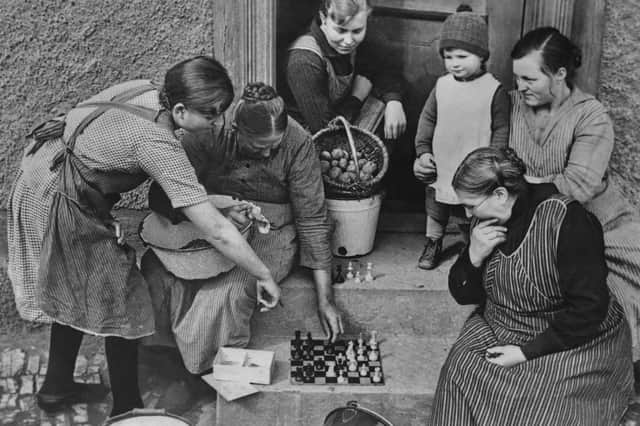Pinnies were like a knight's armour in days of old. Whatever happened to them? – Susan Morrison


Well, I say apron, but this was no frilly-edged scrap of material with a dainty bow round the back. That was for kitchen posers, like Fanny Craddock.
Yer pinnie was essentially a domestic boilersuit, made to protect clothes from hot water, flying fat and whatever that was that geysered up from the drain when it spectacularly unblocked.
Advertisement
Hide AdAdvertisement
Hide AdWomen put them on in the mornings like knights donning their armour before battle, if you swapped polished steel for floral cotton in blazing technicolour.
The pinnie was not just for cooking, but for whatever life threw at you. The pockets were full of clothes pegs and Elastoplasts. Proper ones, mind. None of those Superhero sporting strips of child-friendly plastic we have today. These were the real deal. Great chunky slabs of thick material and a layer of stuff so sticky it welded to the skin.
It had to be ripped off, usually after a count of three, and took all those little hairs you couldn’t see, but really hurt when they were torn out.
Woe betide the hairy legged man who needed an Elastoplast. The removal screams could be heard right down the street.
Advertisement
Hide AdAdvertisement
Hide AdThere were always hankies, and not your namby-pamby paper ones, either. Proper cotton ones that may or may not have been washed after the last nasal evacuation.
There were handy bits of string, possibly a peeler for random vegetables and the occasional boiled sweetie, unwrapped, naturally, but still a sugary treat for a child post-Elastoplast removal, if yer granny sooked the stoor off first.
I never saw anyone actually buy a pinnie. Women just acquired them. They were useful bits of kit, now that I think about them. And I was thinking about them as I wandered about a vintage clothes fair in the Out Of The Blue Hall last weekend.
Oh, there weren’t any vintage pinnies to buy. I don’t know what happened to them. Perhaps they were destroyed when their owners went to the Kitchen in the Sky, like the smashing of a Samurai sword when the warrior has fallen.
Advertisement
Hide AdAdvertisement
Hide AdI mentioned the lack of pinnies to my pal Christine, but she was busy trying on an Afghan coat.
Now, if the pinnie was handy, the Afghan coat was not. Particularly the cheap knock-offs, cobbled together with untreated fleeces and rank sheepskin.
It was much beloved of the wannabe cash-strapped late-1970s Glasgwegian hippy, and it reeked like an incontinent goat when it got damp. This being Scotland, that happened frequently.
To cover the stench of soggy unfinished wool, wearers slathered themselves in patchouli oil. It didn’t work. Now you just stank like a sad wet sheep who’d had a run in with a rogue aromatherapist.
Advertisement
Hide AdAdvertisement
Hide AdAside from the lack of pinnies and the presence of dodgy coats, the vintage clothes fair was a stupendous treat.
The organisers put a real effort into making people feel safe and everyone was masked up. That’s how we’ll beat this thing, by working together, and there will be more happy afternoons wandering about vintage fairs wondering where the pinnies went.
Tell you this, I’ll bet my granny would have stashed extra masks in her pinnie pocket to slap on any bare-face coupon that passed.
A message from the Editor:
Thank you for reading this article. We're more reliant on your support than ever as the shift in consumer habits brought about by coronavirus impacts our advertisers.
If you haven't already, please consider supporting our trusted, fact-checked journalism by taking out a digital subscription.
Comment Guidelines
National World encourages reader discussion on our stories. User feedback, insights and back-and-forth exchanges add a rich layer of context to reporting. Please review our Community Guidelines before commenting.
